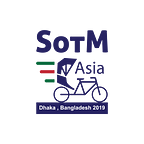Three takeaways from the 3rd State of the Map Asia 2017
The idea of State of the Map Asia (SotM Asia) emerged after the international State of the Map conference was hosted by the Japanese OSM community in 2012. The SotM Asia was organized in Jakarta, Indonesia (2015), followed by Manila, Philippines (2016) and Kathmandu, Nepal (2017).
As the Asian OSM community was planning for the first-ever conference in Jakarta, Nepal had been besieged by a devastating earthquake. The OSM community around the world, led by Kathmandu Living Labs (KLL) in collaboration with the Humanitarian OpenStreetMap (HOTOSM) team, rapidly produced maps of the road network and damaged areas surrounding Kathmandu and other affected districts. These maps were compiled using crowd-sourced data and verified by KLL. In a resounding boost to the OSM community efforts, the maps were used by humanitarian aid workers, NGOs as well as the Nepal Army to provide immediate relief to earthquake victims. In total, over 9000 digital volunteers from around the world contributed to OSM’s database to increase the quality of its data. The OSM community’s contributions were widely appreciated, especially given the challenges faced by rescue and relief teams in reaching out to remote communities located in Nepal’s mountainous terrain.
SotM Asia 2017 was as much a celebration of the OSM community’s efforts in helping distressed Nepalis as much as an acknowledgement of the growing number of Asians contributing to the OSM mission. The conference brought together mappers from 16 Asian as well as 2 North American and European nations respectively.
Moving from ‘Creation’ to ‘Use’
In 2011, the OSM Nepal community started mapping across the country. Two years later, KLL emerged while maintaining contributions to OSM as its flagship program. In 2015, the earthquake was provided a timely reminder of the instrumental role open data plays in times of humanitarian crisis. Since then, the KLL team decided to prioritize the creation and use of such datasets through state and citizen mechanisms. This belief reflected itself in the theme of the conference: ‘from creation to use of OSM data’ as we shared our experiences with other communities across Asia. As the coverage of OSM data continues to grow across the continent, we considered it prudent to invite to do the same, too.
Promoting Gender Equality
While promoting the use of OSM, we were well aware of the disparities that exist within the community. We were keen on maintaining gender parity to the greatest extent possible, and encourage female participation across panels. For instance, 40% of the total country presentations were made by female presenters. Over the course of two days, 34% of our total speakers were female.
Engaging Government officials
Lastly, we reflected on the continued success of the OSM community owing to the greater cooperation between civil society and business community with the government. To that effect, we invited several high-level officials from the Government of Nepal (such as, the CEO of National Reconstruction Authority, the Vice Chair of National Planning Commission, Nepal Police, and Nepal Army). In addition, we invited a panel of government officials from Nepal, Bangladesh, Sri Lanka, and India to discuss how the use of open data may be used better to address societal challenges we face today.
The fourth State of the Map (SoTM) Asia conference is scheduled to take place in Bengaluru, Karnataka, India, from 17th–18th November 2018.
